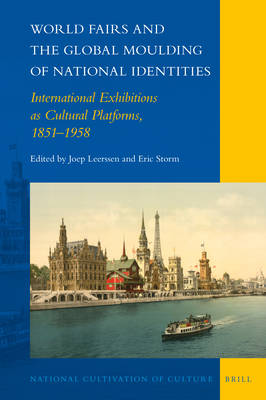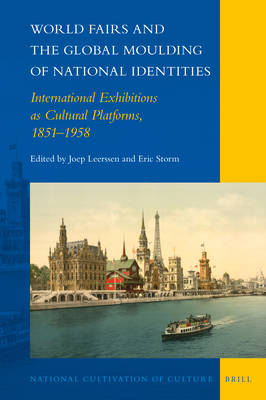
- Afhalen na 1 uur in een winkel met voorraad
- Gratis thuislevering in België vanaf € 30
- Ruim aanbod met 7 miljoen producten
- Afhalen na 1 uur in een winkel met voorraad
- Gratis thuislevering in België vanaf € 30
- Ruim aanbod met 7 miljoen producten
Zoeken
World Fairs and the Global Moulding of National Identities
International Exhibitions as Cultural Platforms, 1851-1958
€ 204,95
+ 409 punten
Omschrijving
This volume examines the role of the broad variety of international exhibitions between 1851 and 1958 in two programmatic essays and twelve case studies, covering not just France and the United States, but also, among others, Sweden, Romania, Colombia, Japan and the nascent European Community.
World fairs were global platforms for the construction of national identities. The mix of national self-profiling and commercial exoticism turned the nation into a "brand", while reframing the nation-state from its nineteenth-century positioning amidst neighbouring enemies towards being a competitor in a global, consumer-oriented trade and entertainment economy. By presenting national identities in "banal" form as feelgood factors, world fairs helped the nation to maintain its grassroots appeal across the century of totalitarianism and internationalism.
Contributors are: Joep Leerssen, Eric Storm, Florian Groß, Anthony Swift, Cosmin Minea, Claire Hendren, Taka Oshikiri, Robert W. Rydell, Sven Schuster, Miriam Oesterreich, Bartosz Dziewanowski-Stefańczyk, Christina Romlid, Jonathan Voges, and Anastasia Remes.
World fairs were global platforms for the construction of national identities. The mix of national self-profiling and commercial exoticism turned the nation into a "brand", while reframing the nation-state from its nineteenth-century positioning amidst neighbouring enemies towards being a competitor in a global, consumer-oriented trade and entertainment economy. By presenting national identities in "banal" form as feelgood factors, world fairs helped the nation to maintain its grassroots appeal across the century of totalitarianism and internationalism.
Contributors are: Joep Leerssen, Eric Storm, Florian Groß, Anthony Swift, Cosmin Minea, Claire Hendren, Taka Oshikiri, Robert W. Rydell, Sven Schuster, Miriam Oesterreich, Bartosz Dziewanowski-Stefańczyk, Christina Romlid, Jonathan Voges, and Anastasia Remes.
Specificaties
Betrokkenen
- Uitgeverij:
Inhoud
- Aantal bladzijden:
- 428
- Taal:
- Engels
- Reeks:
- Reeksnummer:
- nr. 27
Eigenschappen
- Productcode (EAN):
- 9789004498822
- Verschijningsdatum:
- 4/11/2021
- Uitvoering:
- Hardcover
- Formaat:
- Genaaid
- Afmetingen:
- 155 mm x 234 mm
- Gewicht:
- 766 g

Alleen bij Standaard Boekhandel
+ 409 punten op je klantenkaart van Standaard Boekhandel
Beoordelingen
We publiceren alleen reviews die voldoen aan de voorwaarden voor reviews. Bekijk onze voorwaarden voor reviews.







